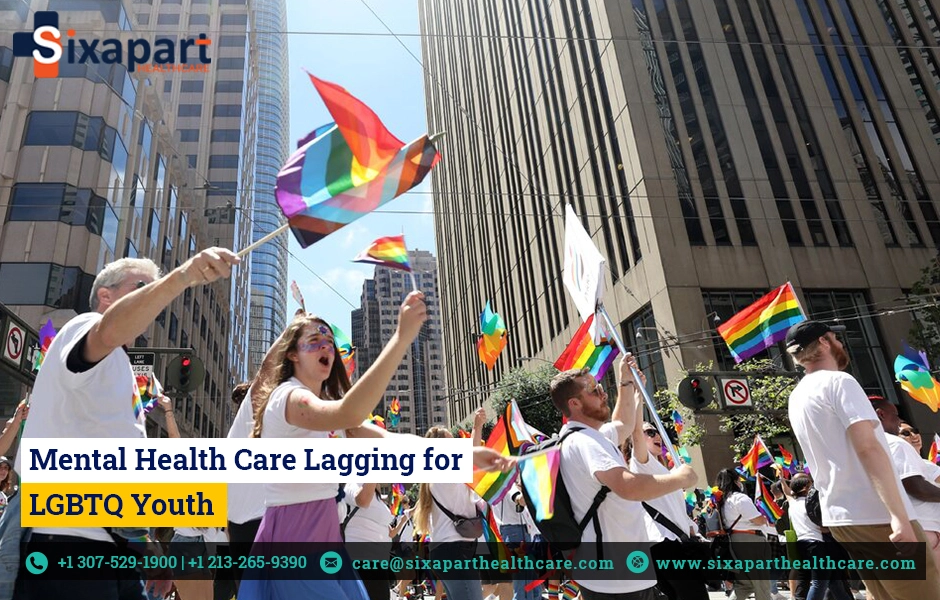Mental Health Care Lagging for LGBTQ Youth
Discover how to enroll in Medicare with valuable information on eligibility, enrollment periods and pitfalls to watch out for.
Article By: Steven Ross Johnson
Blog Source From : www.usnews.com

Little progress has been made in recent years in expanding the share of facilities offering mental health treatment accessible to LGBTQ young people in the U.S., a new study indicates, even as they face a high risk of problems like depression and suicide.
READ: Study: Positives in Youth Mental Health
In an analysis of more than 8,000 facilities in the U.S. that provided mental health services to youth in 2020 – most of which also provided services to adults – researchers found that 28%, or about 2,300, also offered services specifically designed for LGBTQ individuals. That marked a minimal increase from 25% of facilities offering LGBTQ-specific services in 2014, according to the study, which was published Monday in JAMA Pediatrics.
Lead study author Kristen Choi, an assistant professor at the UCLA School of Nursing and an associate program director for the university’s National Clinician Scholars Program, says while there has been greater recognition by society of the existence of health disparities based on sexual and gender identity, the new findings show the nation’s mental health care system needs to be much more responsive to begin addressing those gaps.
“We haven’t made a lot of progress in offering tailored services or gender-affirmative services in the mental health sector,” Choi says. “We’ve got a lot of work to do in trying to improve that and making sure that our mental health systems are able to provide for the unique needs of this population.”
READ: Suicidal Thoughts Plagued Blacks, Girls
For the study, researchers used data from the Substance Abuse and Mental Health Administration’s annual National Mental Health Services Survey, a voluntary survey that aims to glean responses from public and private mental health treatment facilities across the U.S., including psychiatric hospitals, outpatient mental health facilities and more. The study did not include whether youth actually accessed LGBTQ-specific services, and mental health care tied to a primary care- or school-based facility also was excluded.
Availability of LGBTQ mental health services at youth-serving facilities was higher in coastal states and lower in rural states, according to the study. At the same time, on a per capita basis, all states had fewer than 10 youth-serving facilities with LGBTQ-specific services per 100,000 children.
In eight states, more than 40% of mental health facilities that served children offered LGBTQ-specific services, with Connecticut having the highest share at 48%, according to the study’s data. By contrast, only 5% of youth-serving facilities in South Dakota offered LGBTQ-geared care – the lowest percentage of any state.
Meanwhile, California was home to a relatively high percentage of youth-serving facilities with LGBTQ mental health treatment at 44%, though Choi notes that does not necessarily translate into greater access. The Golden State also had a relatively low per capita rate of such facilities, at approximately 2.8 per 100,000 children.
“When we look at those same facilities, at how many providers there are in relation to the number of children they are serving, those services are not actually accessible because so many of these states that offer the services have major, major provider shortages,” Choi says. “So even in states that might be doing a little bit better that doesn’t necessarily mean they have the capacity for the need that’s out there.”
Separate research has found high levels of symptoms of anxiety and depression among LGBTQ youth, with lesbian, gay and bisexual youth also much more likely to have attempted suicide than their heterosexual peers. Suicide risk is high among transgender youth as well.
In the new study, researchers found that for-profit facilities had a higher likelihood of offering LGBTQ-specific services than either nonprofit or public facilities, underscoring concerns about how cost might limit access to mental health care for LGBTQ youth.
MORE: Girls Face ‘Growing Wave’ of Distress
A 2020 report by LGBTQ crisis support organization The Trevor Project, based on a survey of 40,000 LGBTQ youth between the ages of 13 and 24, found that 84% reported a desire in the past year to receive mental health counseling, yet 54% of those who wanted counseling did not receive it. Among those who didn’t get desired mental health care, 62% were Black, 62% were Latinx and 60% were Asian American, compared with 53% who were white. And among the reasons given for not receiving mental health care, 53% of LGBTQ youth reported an inability to pay for services.
Choi says disparities in access to mental health services related to the socioeconomic status or race and ethnicity of LGBTQ youth was not examined for her study, though she feels those are areas of interest for future investigation.
“Seeing that we found that these services were less likely in public facilities, we have to think about who are the kids whose only options for services might be public facilities that are offered in their home counties or states,” Choi says. “We do know that (the) population of people who access public mental health services are more likely to be people who are low-income, people of color, and if we’re seeing a disparity there between the public services and the for-profit services, it suggests that we have some work to do in the public mental health sector.”
———————–
If you or someone you know is struggling or in crisis, please call or text 988, or chat at 988lifeline.org. Those experiencing mental health concerns also can visit the Substance Abuse and Mental Health Services Administration for more information about symptoms and treatment options.

